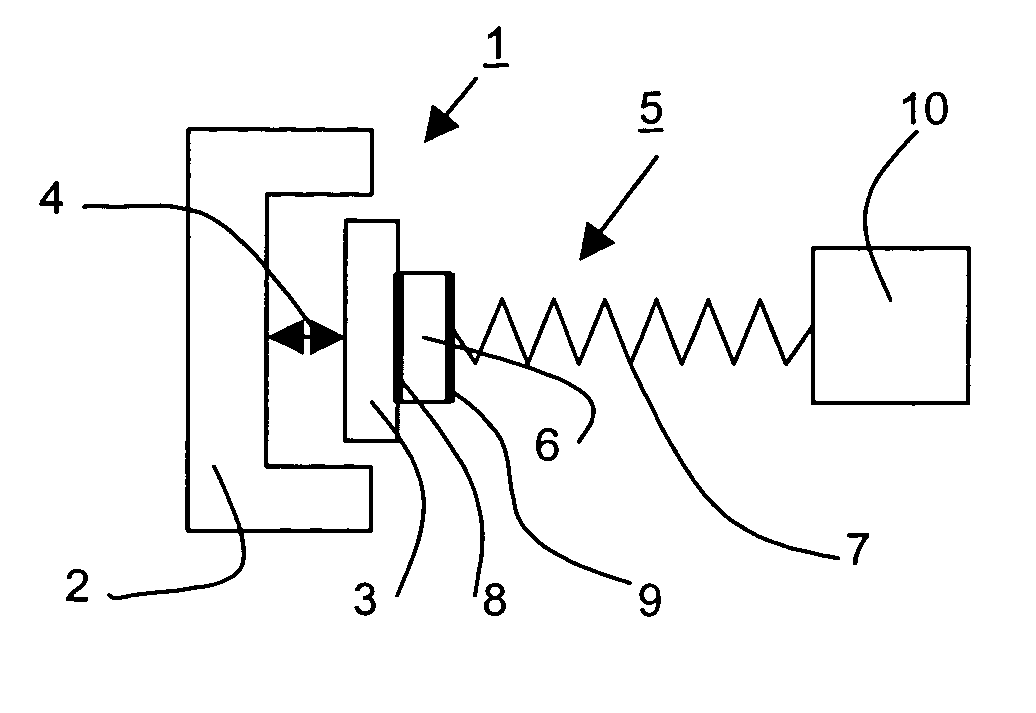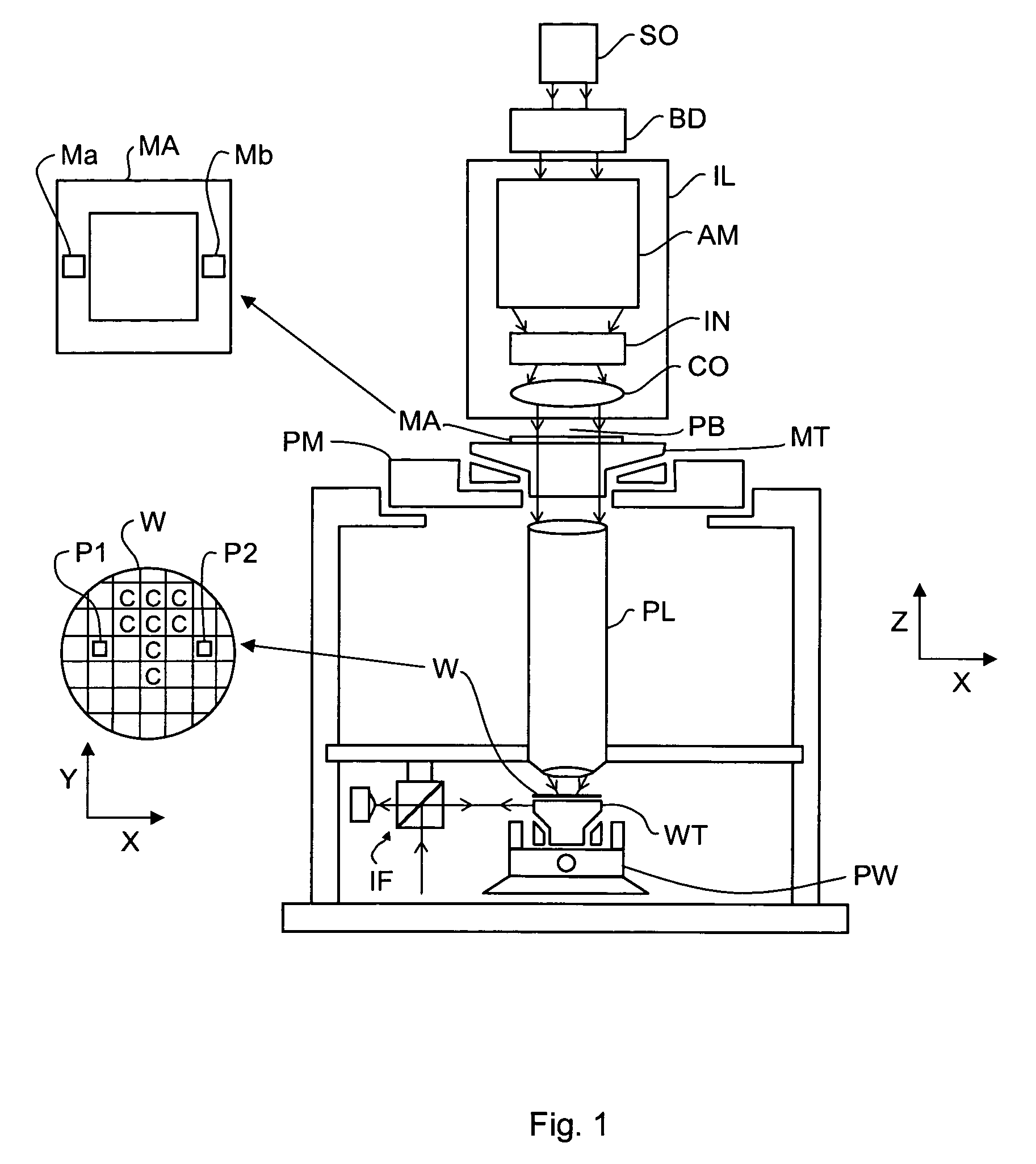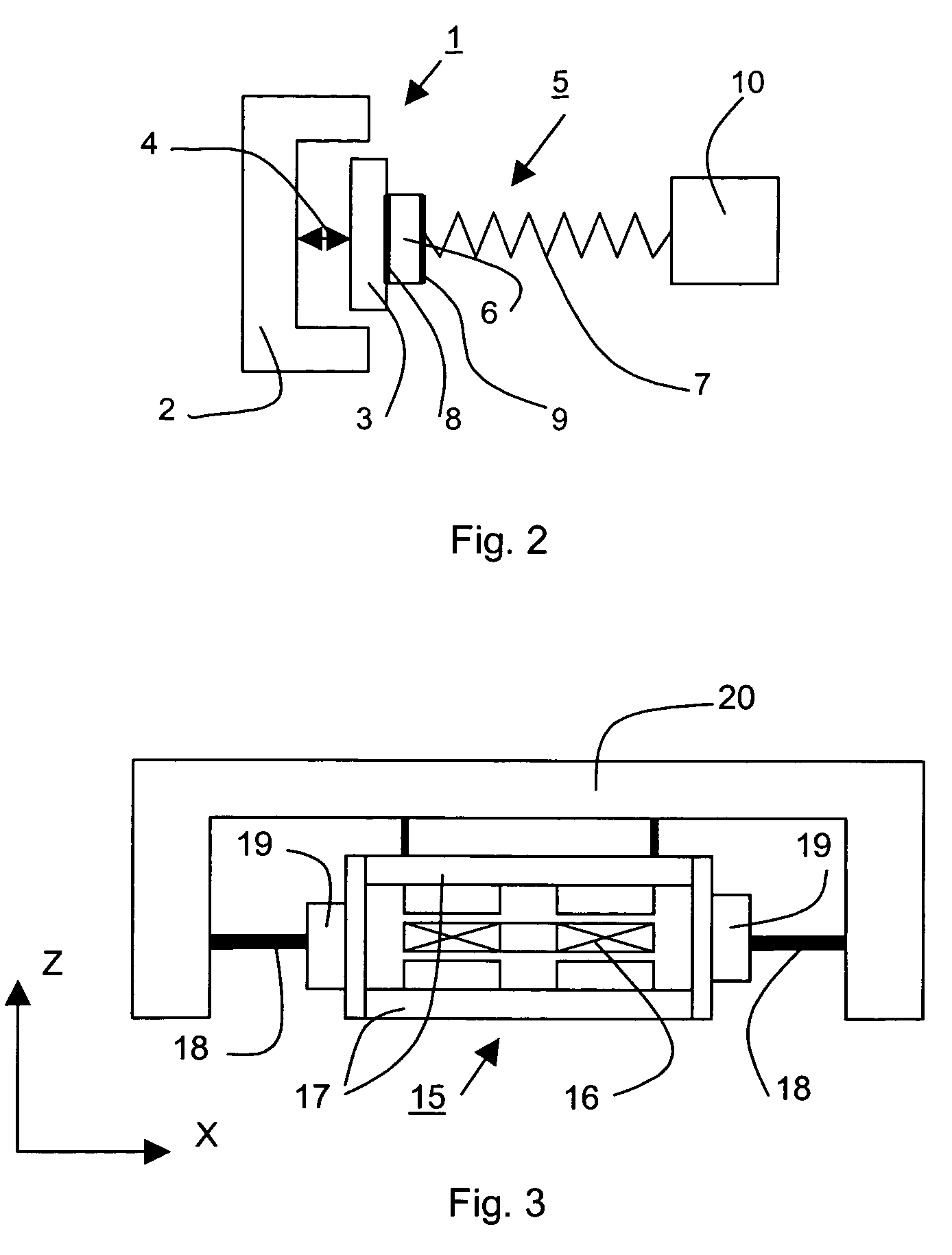Positioning device and device manufacturing method
a technology of positioning device and manufacturing method, which is applied in the direction of optical devices, instruments, photomechanical apparatuses, etc., can solve the problems of time-consuming control effort and the position error of the object or object table, and achieve the effect of less substrates per unit of time, less substrates, and accurate positioning of the substra
- Summary
- Abstract
- Description
- Claims
- Application Information
AI Technical Summary
Benefits of technology
Problems solved by technology
Method used
Image
Examples
Embodiment Construction
[0061]Although embodiments of the positioning device of the present invention will be described within the context of a lithographic apparatus for clarity, it will be appreciated that the positioning device, as disclosed, may be equally applied to other technologies and / or systems.
[0062]FIG. 1 schematically depicts a lithographic apparatus according to a particular embodiment of the invention. The apparatus comprises:[0063]an illumination system (illuminator) IL: for providing a projection beam PB of radiation (e.g. UV or EUV radiation).[0064]a first support structure (e.g. a mask table / holder) MT: for supporting patterning device (e.g. a mask) MA and connected to first positioning mechanism PM for accurately positioning the patterning device with respect to item PL;[0065]a substrate table (e.g. a wafer table / holder) WT: for holding a substrate (e.g. a resist-coated wafer) W and connected to second positioning mechanism PW for accurately positioning the substrate with respect to ite...
PUM
| Property | Measurement | Unit |
|---|---|---|
| acceleration | aaaaa | aaaaa |
| force | aaaaa | aaaaa |
| wavelength | aaaaa | aaaaa |
Abstract
Description
Claims
Application Information
 Login to View More
Login to View More - R&D
- Intellectual Property
- Life Sciences
- Materials
- Tech Scout
- Unparalleled Data Quality
- Higher Quality Content
- 60% Fewer Hallucinations
Browse by: Latest US Patents, China's latest patents, Technical Efficacy Thesaurus, Application Domain, Technology Topic, Popular Technical Reports.
© 2025 PatSnap. All rights reserved.Legal|Privacy policy|Modern Slavery Act Transparency Statement|Sitemap|About US| Contact US: help@patsnap.com



